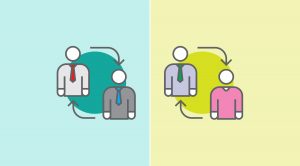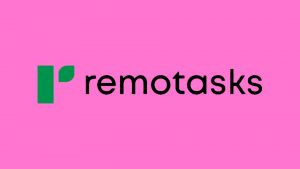Given the personal finance realm, one of the most vital documents an employee encounters regularly is the payment stubs or the paycheck stubs at any given business or organization. Of course, understanding this document is crucial because it empowers individual employees to make informed financial decisions, budget effectively, and ensure they receive accurate compensation.
Markedly, while employers are not required by the governing law to provide employees with a pay stub, many nations have laws that require some form of a written payment statement. As a rule of thumb, even if you’re not in a country that requires business owners to create paycheck stubs, you’re still required by the Fair Labor Standards Act to keep track of the hours your employees work.
When employees receive their paychecks from you, the pay stub outlines the details of their pay each pay period. A hard-copy pay stub on a physical payment check is typically attached to the same piece of paper through perforation. If you pay your employees directly, their payout checks are electronically deposited into their respective bank accounts. As such, a payroll system matters.
One thing is sure: great business payroll software allows all employees to easily and quickly access their pay stubs. In most cases, Paycheck Stubs contain essential data and information, including personal details, earnings, and deductions. Remember, all those elements associated with pay stubs are necessary for tax filing, generating Forms W-2 and 1099 for tax returns, or the like.
Understanding Why Paycheck Stubs Are Crucial In An Employee Payout Process
As mentioned, Paycheck Stubs, or Pay Stubs or Payment Stubs, are a document employers provide to employees alongside their paychecks. To enumerate, the primary pay stub purpose is to outline the details of an employee’s earnings and deductions for a specific pay period. On that note, beyond being a compensation record, pay stubs are vital for tax reporting and financial planning.
As a business employer, a payment stub is helpful for tax return processing purposes and can be used to resolve any discrepancies with employee payout. For your employee, it provides a record of their earnings, helps them understand their taxes, contributions, and deductions, and allows them to ensure they were paid correctly. It can also serve as proof of income or employment for them.
Generally speaking, this is often required when applying for a loan, form of credit, or housing. Because of this, you may want to consider making it as hassle-free as possible for your employees to access their pay stubs, even if it’s not a requirement in your state. Whether your workforce is mainly salaried or hourly workers, you’ll need a way to calculate and store their payroll data details.
Note the following:
- Personal Information: The top section of a pay stub typically includes personal information such as the employee’s name, address, and identification or social security number. This information ensures that the pay stub is accurately linked to the right employee.
- Payable Earnings: Earnings are a central part of the pay stub. Two essential figures you’ll find here are gross pay and net pay. Gross pay represents the total amount an employee earns before deductions, while net pay is the amount they receive after all the salary deductions have been applied.
In other words, paycheck stubs record the salary details and wage information for employees and self-employed workers, such as independent contractors or freelancers. On that note, it’s highly recommended that you and your human resources team know what is included in them. As well as be aware of any existing governing laws, current tax regulations, and other vital requirements.
The Topmost Essential Information While Processing Your Paycheck Stubs
It’s important to realize that business employers and employees must have their custom Paycheck Stubs documented, saved, or stored somewhere safe. In that case, a company seeking to create payment stubs must only use the best PayStub Creator or effective paycheck stub generator tool. Eventually, such a practice allows most organizations to avoid unnecessary business legal troubles.
Under gross earnings for hourly employees, it should list the hourly rate and number of hours they worked. For salaried workers, the default is 40 hours a week. Your employee paycheck stubs should also indicate overtime pay if the employee is eligible and any overtime hours that were worked. Likewise, if an employee received any bonuses, that would also appear under gross earnings.
Generally, it would help if you aimed to keep your employee pay stubs and payroll records for at least four years. The IRS requires employers to keep their employment tax records for at least four years after filing. In addition, the Fair Labor Standards Act (FLSA) and the Age Discrimination in Employment Act (ADEA) require employers to keep at least three years of employment records.
At the same time, the Equal Employment Opportunity Commission (EEOC) mandates that all employment and personnel records be kept for at least one year. For your information, the gross wage number reflects the amount you pay your employees before taxes, contributions, and other deductions. In other words, an effective paycheck stub typically includes all vital elements.
The most essential payment stub elements are as follows:
- Employee information, including name, social security number, and address
- Employer information, including company name and address
- The dates of the pay period and the actual employee pay rate
- Gross earnings, or their earnings before taxes, employee contributions, and deductions are taken out
- Taxes withheld, such as residential income tax and, if applicable, state or local income taxes
- Employee contributions, such as to retirement plans or pensions
- Deductions, such as for health insurance or life insurance
- Net pay (the amount employees take home as their gross paycheck earnings after all tax deductions and contributions).
Technically, to streamline your record-keeping requirements for your small business, look for a payroll service provider or payroll software that keeps electronic copies of these documents on your behalf. Those user-friendly services or tools can provide you with pay stub templates or the best pay stub generators and even perform auto-calculations and automatically file payroll taxes.
Some states also require additional information, such as accrued sick leave, to be included. Markedly, a Year-To-Date (YTD) gross income on a payment stub reflects total earnings paid out by any given pay period. From a business point of view, deductions are a significant portion of an effective paycheck stubs plan and can significantly impact an employee’s take-home pay, such as follows.
1. Income Tax Contributions
The most common deductions are taxes. As the name implies, an income tax deduction is any amount taken from an employee’s gross wages, such as taxes and contributions. It’s essential to include these numbers on your pay stubs so your employees know how much is taken out of their checks every pay period. This includes federal, state, and sometimes local income taxes. Understanding these deductions helps employees gauge how much of their income goes toward fulfilling tax obligations.
2. Social Security and Medicare
These are the protections that society provides to individuals and households. Primarily to ensure access to health care and to guarantee income security. Particularly in old age, unemployment, sickness, invalidity, work injury, maternity, or loss of a breadwinner. Social Security and Medicare taxes are mandatory contributions that fund government programs. These deductions are typically calculated as a percentage of an employee’s gross pay.
3. Retirement Benefit Contributions
A defined contribution (DC) scheme is a scheme in which member and employer contributions are fixed either as a percentage of pensionable earnings or as a shilling amount. A member’s retirement benefits are equal to those contributions, net of expenses, including premiums paid for insurance of death or accident. If an employee participates in an employer-sponsored retirement plan, this section will detail their contributions to their retirement account. Standard retirement accounts include the 401(k) and IRA.
4. Health Insurance Premiums
By all means, health insurance is an agreement in which an insurance company agrees to pay for some or all of your medical expenses in exchange for a monthly premium payment. For those with employer-provided health insurance, the pay stub will also show the amount deducted for premiums. Understanding the coverage and contribution details is essential.
5. Other Possible Contributions
Another kind of deduction taken out of employee paychecks, contributions are often directly related to the types of employee benefits you offer to your workforce. These deductions include insurance premiums, union dues, charitable donations, retirement schemes, or saving plans. Note that if you contribute to your employees, they typically add to their gross wages.
The Difference Between Electronic Paycheck Stubs Vs. Paper Payment Stubs
On the one hand, once all the deductions above have been removed from your employee paychecks, they’re left with their net pay (also called take-home pay). On the other hand, your employees’ take-home pay may differ significantly from their gross pay depending on how much is deducted every pay period. For that reason, noting every deduction taken on a payment stub is essential.
Unlike defined benefit schemes, which promise a specific income, the income you might get from a defined contribution scheme depends on factors. Such factors include the amount you pay in, the fund’s investment performance, the amount your employer can contribute, and your retirement benefit scheme choices. Usually, the IRS controls the amount you can contribute to a 401(k) plan.
In layman’s language, you may want to review all the deductions, such as the Individual Retirement Account (IRA) and other contributions, to ensure accuracy and understand their purpose. In the modern world, payment stubs usually come in two ways.
They are as follows.
- Electronic Pay Stubs are digital, convenient, eco-friendly, and can be accessed online anytime, reducing the risk of losing them.
- Paper Payment Stubs are physical copies. Some people like having something they can touch.
It’s important to know which type your employer uses and how to access your pay information, whether electronic or paper-based. In opt-out forms, businesses must get employees’ consent before changing how they deliver paycheck stubs and adhere to the previous method if an employee prefers. Employers must offer paper stubs in opt-in forms unless an employee chooses the electronic stubs.
In Conclusion;
As you can see, paycheck stubs are valuable documents and, ultimately, the key to understanding financial compensation. For example, taxes are one kind of deduction on employee pay stubs. Employees can expect to see income tax deductions removed from their paychecks and federal and state income tax withholdings. Some labor law does not require you to generate employee pay stubs.
However, many states have laws and regulations that require you to supply them. Do you live in a state with no requirements? For instance, if you’re in a state like Alabama or Florida, which haven’t created their own rules, you don’t have to provide any paycheck stubs. If you live in “access states” like Ohio and Texas, they require you to provide an electronic payment stub or paper stub.
Equally important, states like Indiana and Kansas allow you to provide either an electronic or paper stub. Still, employees who get electronic stubs must have an easy way to print or access them. With that in mind, by deciphering the information on your payroll payment stub, you can take control of your finances, ensure accuracy in your earnings, and plan for your financial future effectively.









